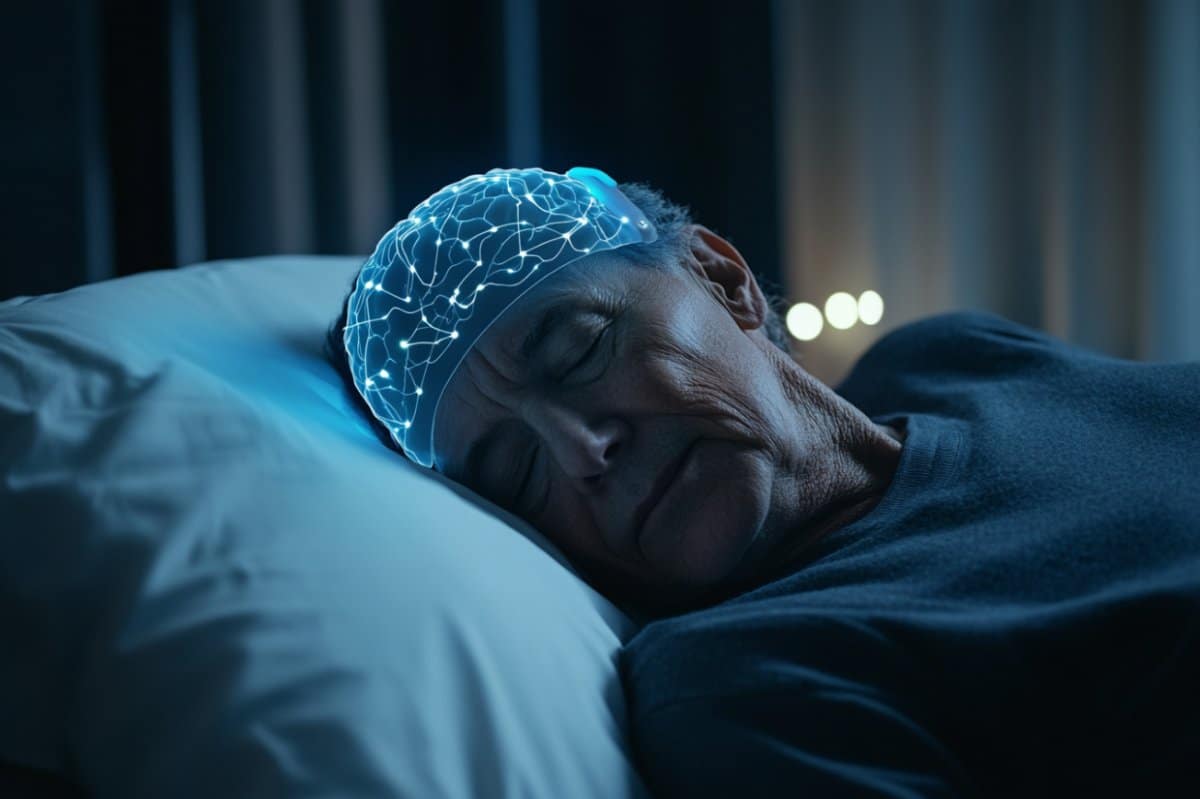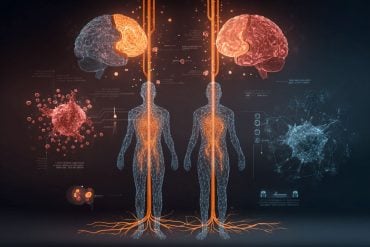Summary: A new wearable device has been developed to noninvasively monitor the brain’s glymphatic system, which helps clear waste and may play a role in neurological conditions like Alzheimer’s. Traditionally only measurable via MRI, researchers can now observe this system throughout different sleep stages using a head cap embedded with electrodes.
The device revealed that glymphatic activity doesn’t simply switch on during sleep and off when awake, but instead builds progressively during sleep and decreases gradually upon waking. This finding offers insights into how sleep quality impacts brain health and could help identify individuals at risk for neurodegenerative diseases.
Key Facts:
- Continuous Monitoring: The device measures glymphatic flow across sleep stages using electrodes, not MRI.
- Glymphatic Activity: Waste-clearing increased during deep, REM, and wake transitions, not just in slow-wave sleep.
- Clinical Potential: The tool could help predict, prevent, or treat neurodegenerative diseases like Alzheimer’s.
Source: University of Washington
A new device that monitors the waste-removal system of the brain may help to prevent Alzheimer’s and other neurological diseases, according to a study published today in Nature Biomedical Engineering.
In the study, participants were asleep when they wore the device: a head cap embedded with electrodes that measures shifts in fluid within brain tissue, the neural activity from sleep to wakefulness and changes in the brain’s blood vessels.

By measuring these three features, the researchers found they could monitor the brain’s glymphatic system, which acts as a waste-removal and nutrient-delivery system.
This is the first time that researchers have been able to track the flow of glymphatic fluid in individuals at different levels of sleep through a single night.
Previously these processes could only be monitored at university research centers by using MRI, an approach that is too slow to track minute changes in individuals’ sleep stages.
“We have assumed that this system operated in a sort of ‘on-off’ manner: ‘on’ during sleep — particularly during slow-wave sleep — and ‘off’ during waking,” said Jeffrey Iliff, coauthor of the study and a professor in psychiatry and neurology at the University of Washington School of Medicine.
These assumptions, Iliff added, were based on rodent studies he and others conducted over the last decade. When the research involved human participants, however, the investigators were surprised at the findings.
They found that the glymphatic system was active in both deep and REM sleep, as well as when the person was waking up. Rather than turning on and off, switchlike, this clearance function appeared to accelerate the longer a person slept, and then slow down gradually as they woke, Iliff noted.
“It lets us monitor how this system is related to sleep and how it’s affected by sleep disruption in humans — something that is critical if we are trying to understand the role that this biology plays in clinical psychiatric and neurological conditions,” Iliff said.
These findings are important because the glymphatic system plays a vital role in clearing brain proteins whose abnormal accumulation is linked to disorders such as Alzheimer’s and Parkinson’s disease, he said.
“This is a critical step in the development of therapeutics targeting glymphatic function,” Iliff said. “And if you can develop therapeutics that improve glymphatic function, you might be able to treat or prevent conditions like Alzheimer’s disease.”
The wearable device, developed by California-based Applied Cognition, could have several potential uses, Iliff suggested. It could help scientists define whether glymphatic dysfunction contributes to the development conditions such as Alzheimer’s, traumatic brain injury and migraine headaches.
It could inform the development of new therapeutics to improve glymphatic function. And it could be used to identify patients at risk for these conditions, who might benefit most from these new therapeutics.
This study was conducted with participants at the University of Washington Medical Center – Montlake and the University of Florida between October 2022 and June 2023.
In all 35 participants participated in benchmarking study in Florida, and an additional 14 in replication study in Seattle. All participants ranged between 56 and 66 years of age.
Swati Rane Levendovszky an MRI physicist and former director of UW Medicine’s Diagnostic Imaging Sciences Center, also worked on the project. She now works at the University of Kansas Medical Center.
“This work is pivotal in defining the role glymphatic dysfunction plays in Alzheimer’s and discovering therapies to rescue it,” said Dr. Paul Dagum, CEO of Applied Cognition.
“Our platform has already identified a promising drug candidate that improves glymphatic clearance in early clinical trials.”
Iliff’s lab studies the glymphatic system and its role in neurodegenerative conditions such as Alzheimer’s and traumatic brain injury.
Funding: This study was funded by Applied Cognition, where Iliff served as chair of the company’s scientific advisory board and received compensation in that role.
About this neurotech and neuroscience research news
Author: Barbara Clements
Source: Washington University
Contact: Barbara Clements – Washington University
Image: The image is credited to Neuroscience News
Original Research: Open access.
“A wireless device for continuous measurement of brain parenchymal resistance tracks glymphatic function in humans” by Jeffrey Iliff, et al. Nature Biomedical Engineering
Abstract
A wireless device for continuous measurement of brain parenchymal resistance tracks glymphatic function in humans
Glymphatic function in animal models supports the clearance of brain proteins whose mis-aggregation is implicated in neurodegenerative conditions including Alzheimer’s and Parkinson’s disease.
The measurement of glymphatic function in the human brain has been elusive due to invasive, bespoke and poorly time-resolved existing technologies.
Here we describe a non-invasive multimodal device for the continuous measurement of sleep-active changes in parenchymal resistance in humans using repeated electrical impedance spectroscopy measurements in two separate clinical validation studies.
Device measurements successfully paralleled sleep-associated changes in extracellular volume that regulate glymphatic function and predicted glymphatic solute exchange measured by contrast-enhanced MRI.
We replicate preclinical findings showing that glymphatic function is increased with increasing sleep electroencephalogram (EEG) delta power and is decreased with increasing sleep EEG beta power and heart rate.
The present investigational device permits the continuous and time-resolved assessment of parenchymal resistance in naturalistic settings necessary to determine the contribution of glymphatic impairment to risk and progression of Alzheimer’s disease and to enable target-engagement studies that modulate glymphatic function in humans.






